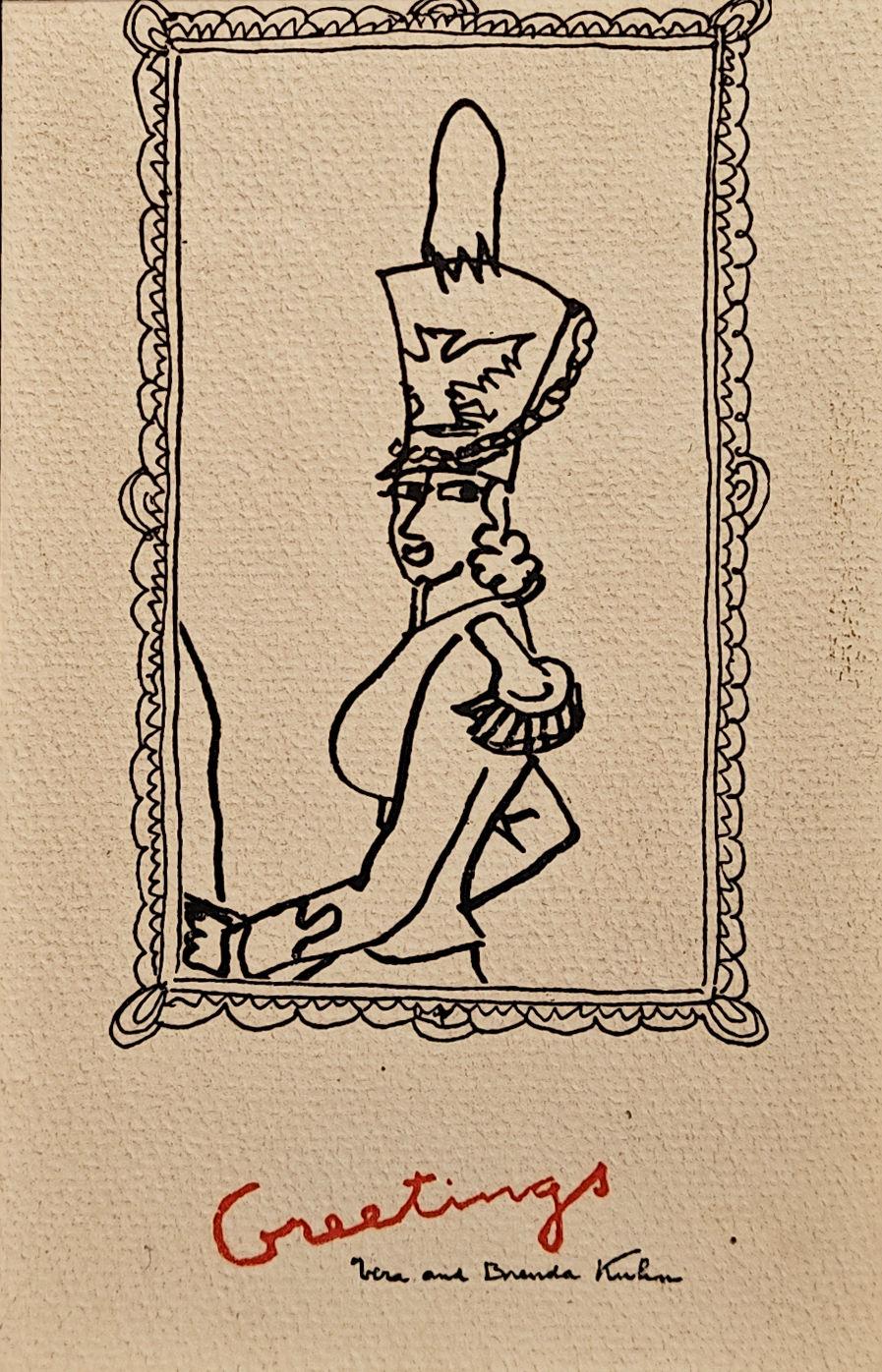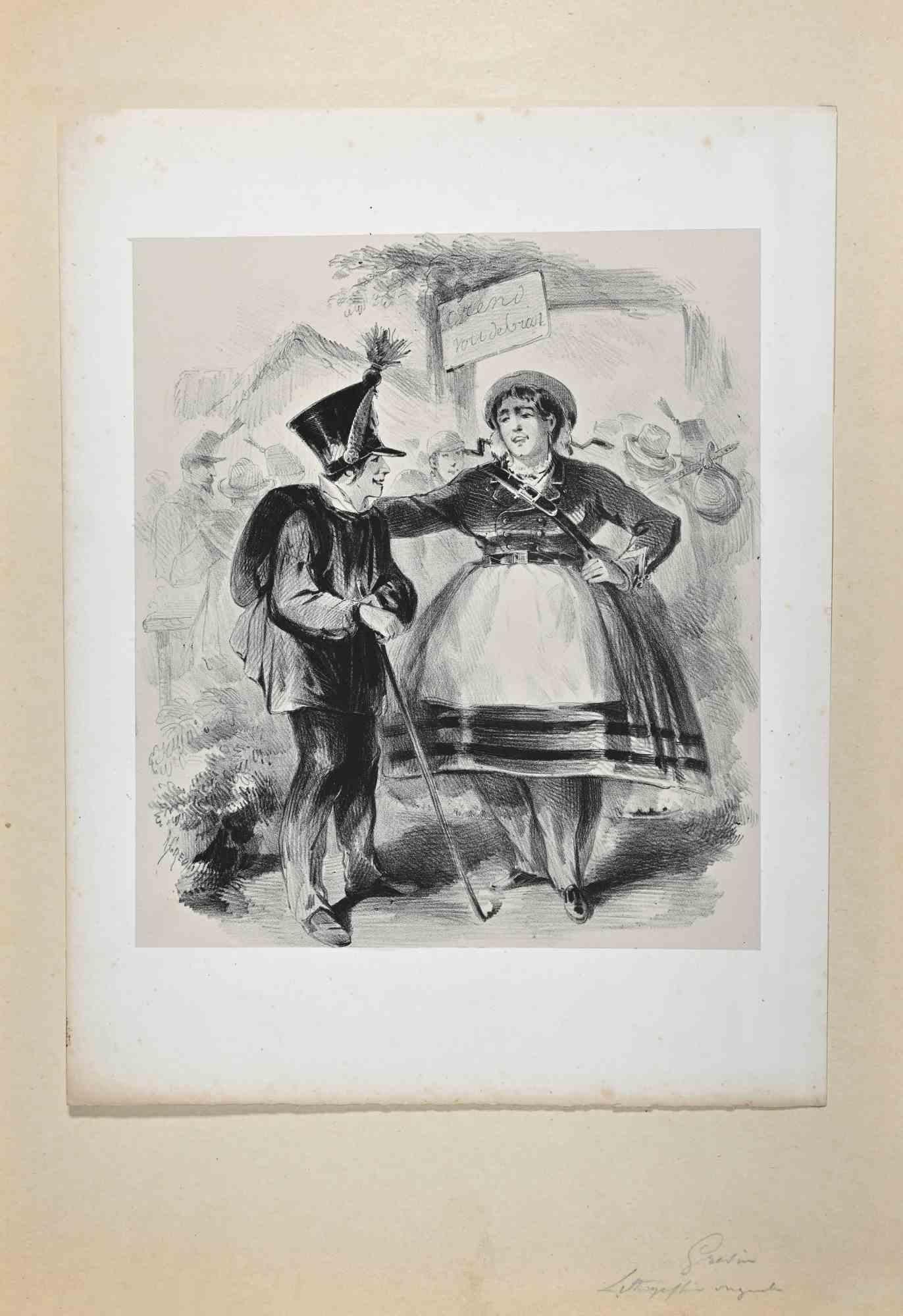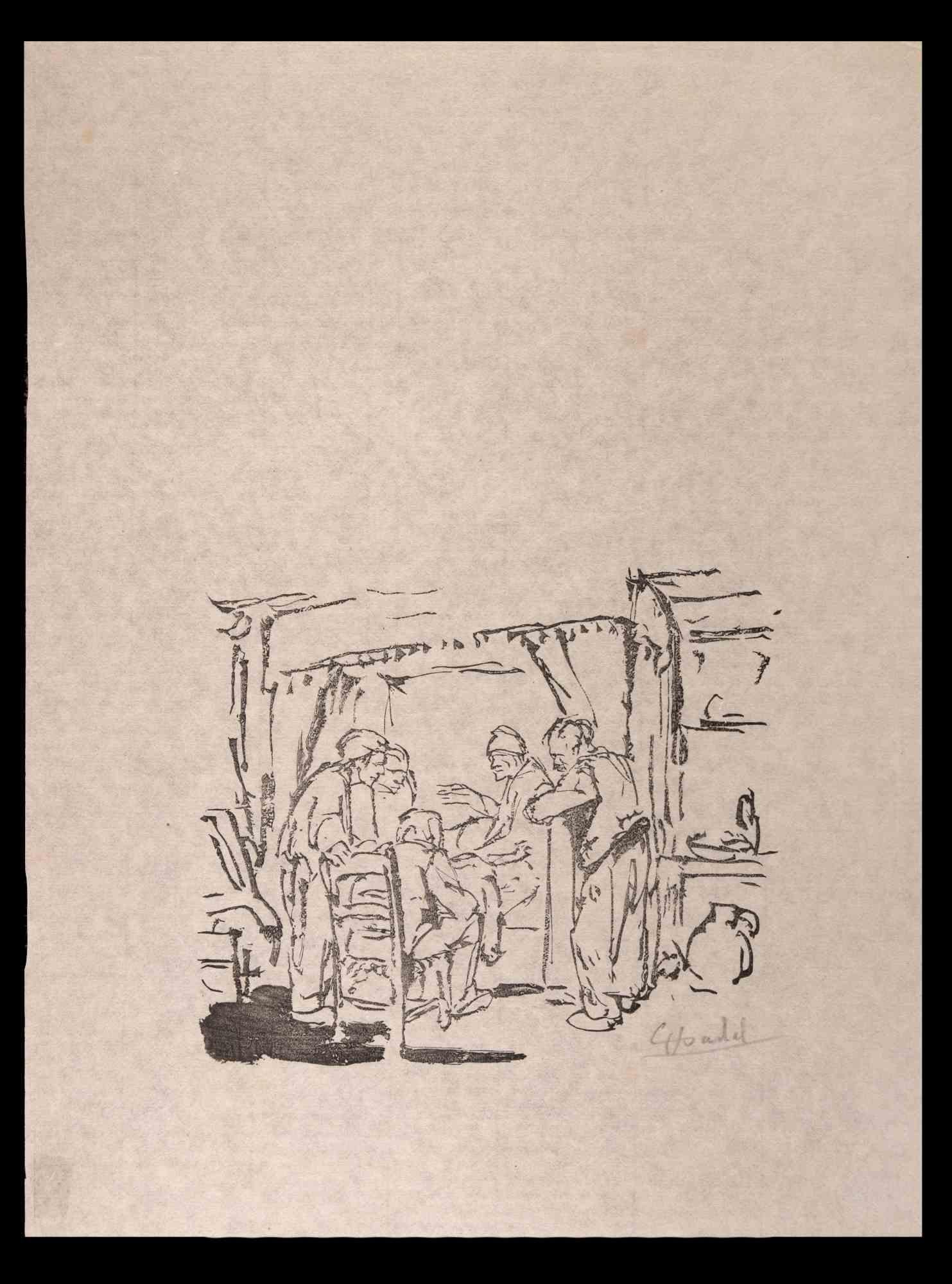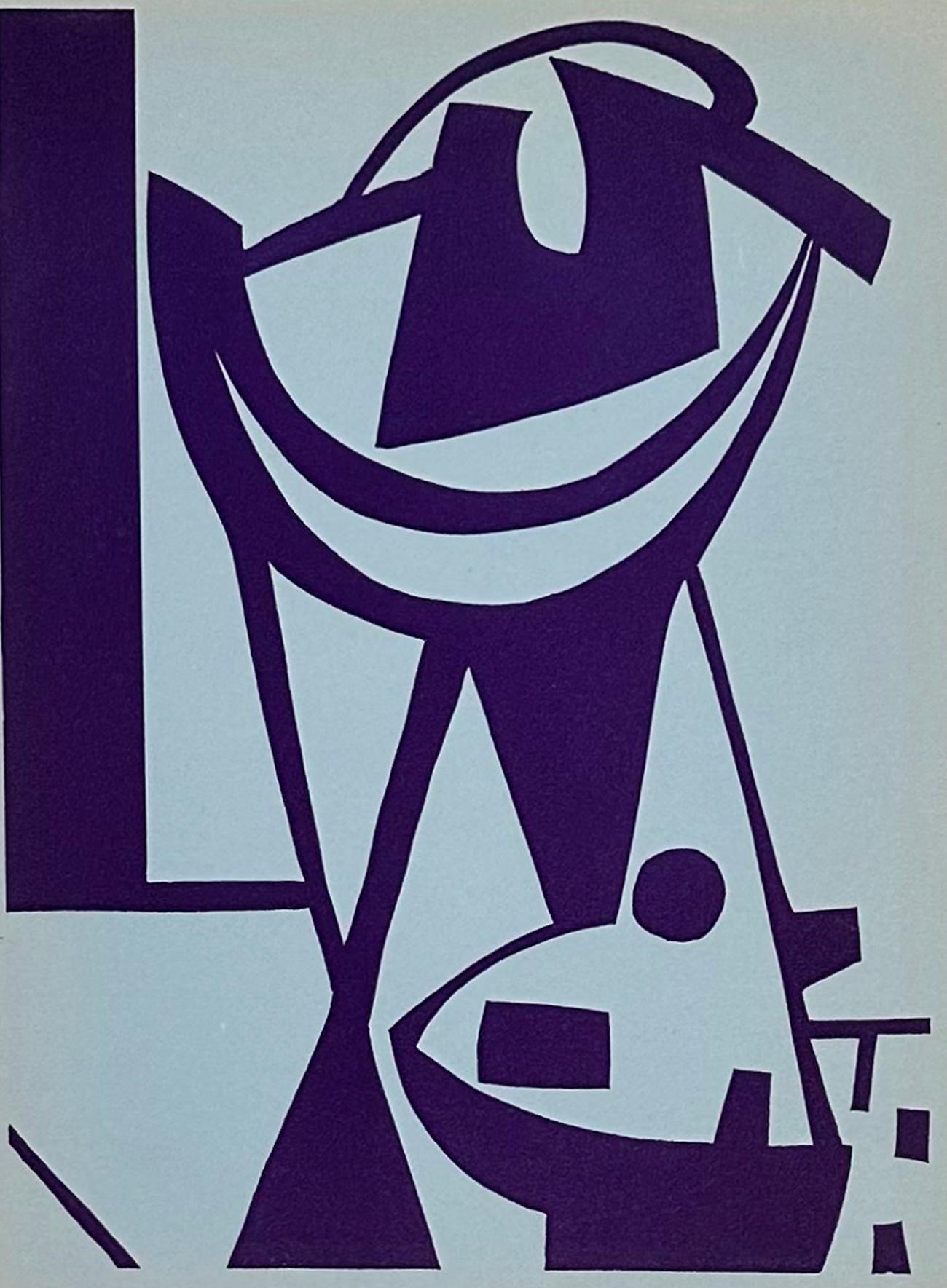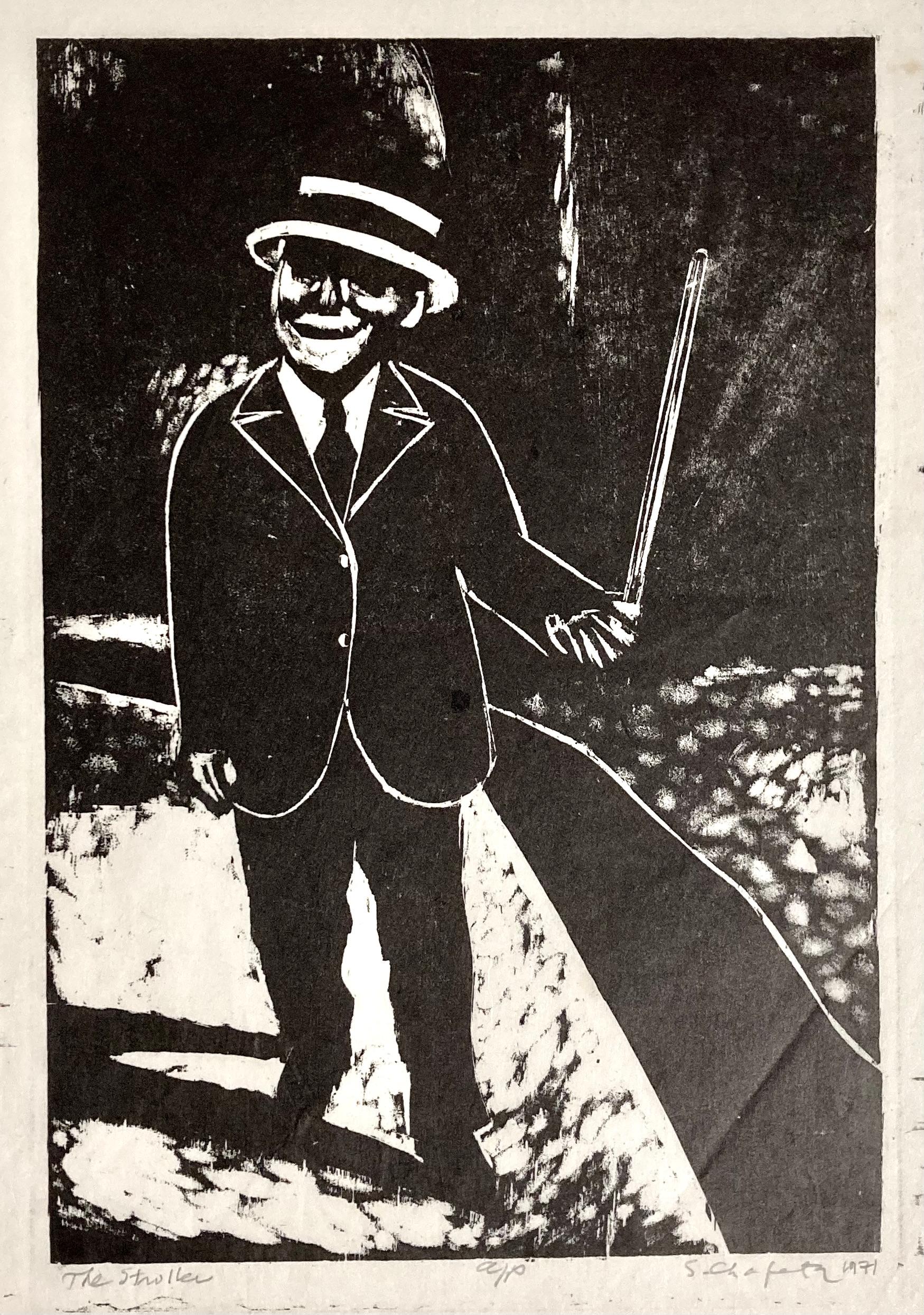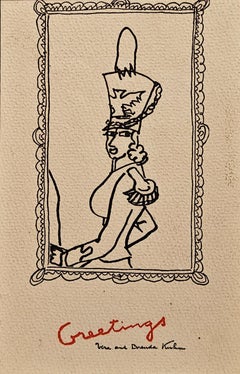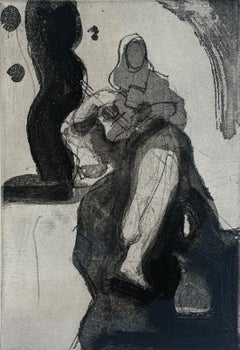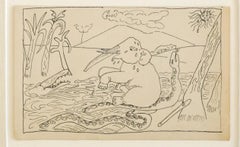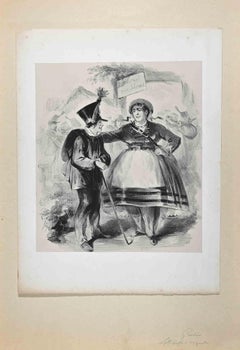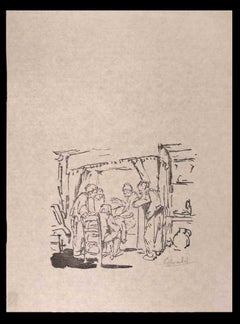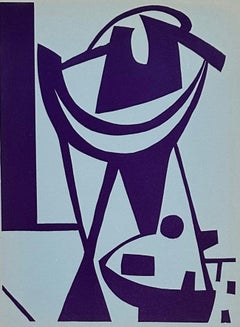Items Similar to "Kuhn Family Holiday Card" Walt Kuhn, Greeting Card by American Modernist
Want more images or videos?
Request additional images or videos from the seller
1 of 4
Walt Kuhn"Kuhn Family Holiday Card" Walt Kuhn, Greeting Card by American Modernistcirca 1935
circa 1935
$750
£572.09
€651.78
CA$1,054.13
A$1,150.03
CHF 608.93
MX$13,780.63
NOK 7,755.11
SEK 7,091.47
DKK 4,866.78
About the Item
Walt Kuhn
Kuhn Family Holiday Card
Lithograph on paper
5 1/2 x 4 inches
Walter Kuhn was born on October 27, 1877 in Brooklyn, NY. His father, Francis Kuhn, was the owner of a ship provisioning business and several New York hotels. Kuhn’s mother, Amelia Hergehan, introduced her son to art and theater at a young age. From this point forward, Kuhn’s lifelong interest in art, theater and the circus began. For the remainder of his life, employment in the entertainment industry acted as a second career and source of income for the artist. More importantly, it provided limitless inspiration for his canvases.
At the age of 15, Kuhn sold his first drawings to a magazine and began to sign his name “Walt.” In 1893, he enrolled in evening art classes at the Brooklyn Polytechnic Institute. However, he soon lost interest in becoming an artist and instead, decided to open a bicycle shop in Brooklyn. In his lifetime, Kuhn would become known for his impulsive, yet dedicated personality.
By 1899, Kuhn had become enamored with ideas of the American West, and with only $60 in his pocket, he set out for California. Upon his arrival in San Francisco, he again took up the pen and became a cartoonist for WASP magazine. In 1901, the young artist departed for Paris, where he enrolled in formal art classes at the Academy Colarossi. Finding too little discipline for his liking in Paris, Kuhn soon left for the Royal Academy in Munich, where he studied under Barbizon painter Heinrich von Zugel (1850-1941).
In 1903, he returned to New York and immersed himself in the booming art scene. While continuing to work as an illustrator for local journals, he helped manage the Kit Kat Club- an organization that raised funds for scholarships at the National Academy of Design. In 1905, he held his first exhibition at the artist run, Salmagundi Club, establishing himself as both a cartoonist and a serious painter. That same year, he submitted his first illustrations to LIFEmagazine.
Kuhn regularly spent his summers in Fort Lee, NJ— one of the early homes of the movie industry. The area provided the maturing artist with the creative environment he needed to thrive. When the New York School of Art moved to the area in the summer of 1908, Kuhn joined the faculty. However, he soon came to dislike his experience as an instructor, and when the school moved back to New York, he also went along- only this time, in separate ways.Upon his return, he married Vera Spier. The couple had one child, a daughter Brenda Kuhn.
While his home life was beginning to blossom, so was his career. In 1909, he spent the year preparing his first one-man exhibition for the Madison Gallery in New York. The show proved to be a huge success. Soon after, Kuhn took part in establishing the Association of American Painters and Sculptors- the organization responsible for the landmark Armory Show of 1913. As the executive secretary, he was responsible for finding artists to participate. The Armory Show, which displayed both European and American modern art to New York audiences for the first time, proved to be a huge success de scandale. In 1938, Kuhn published an “insider’s” viewpoint to the event in his seminal essay, “The Story of the Armory Show.” Following the exhibition, Kuhn began to explore new ways for artists to break established barriers. In 1917, he founded the Penguin Club, an organization where artists held open meetings and provided criticism for each other.
By 1925, Kuhn’s health had taken a dramatic turn when a duodenal ulcer almost killed him. After a prolonged recovery, he eventually joined the faculty of the Art Student’s League. He also took up a commission for the Union Pacific Railroad, in which he completed designs for new club cars. Almost foreseeing the end of his career, the aging artist organized his first retrospective in 1939, which took the form of a book titled, Fifty Paintings by Walt Kuhn.
By the 1940s, Kuhn’s eccentric behavior began to take on unstable forms that had never surfaced before. He became increasingly distant, and when the Ringling Brothers, Barnum and Bailey Circus was in town, he religiously attended. This particular painting is similar to that of Milton Avery's circus paintings from the same period. In consequence, his unsound demeanor did not go unnoticed, and in 1948, he was institutionalized.
Kuhn’s last years are marked with tragedy and remain a mystery. Rumors of attempted suicides plague his biographies. Nonetheless, on July 13, 1949, he died instantly from a perforated ulcer. In a bittersweet act, Vera and Brenda Kuhn placed his favorite drawing pen in his jacket pocket prior to his wake.
- Creator:Walt Kuhn (1877-1949, American)
- Creation Year:circa 1935
- Dimensions:Height: 7 in (17.78 cm)Width: 5.5 in (13.97 cm)
- More Editions & Sizes:PrintPrice: $750
- Medium:
- Movement & Style:
- Period:
- Condition:
- Gallery Location:New York, NY
- Reference Number:1stDibs: LU1841216046852
Walt Kuhn
Walt Kuhn (1877-1949) He was associated with "The Eight" and with Arthur B. Davies, was a the key figure in forming the American Association of painters and Sculptors that organized the Armory Show of 1913 that introduced modernist European art to America. Kuhn was executive secretary of the Association and traveled abroad to select entries for the Armory Show. He was strongly influenced by Cezanne which is evident in many of his paintings. Like Cezanne, he destroyed many of his paintings, keeping only about a dozen a year. He was born in Brooklyn, New York and in 1900 first used the name Walt when illustrating magazines in San Francisco. He studied at the Royal Academy in Munich from 1901 to 1903 and returned to New York where he worked as a cartoonist and magazine illustrator. In the permanent collection of most major museums worldwide. His record price for a painting to date is 1.6 Million dollars.
About the Seller
5.0
Platinum Seller
Premium sellers with a 4.7+ rating and 24-hour response times
Established in 2022
1stDibs seller since 2022
132 sales on 1stDibs
Typical response time: <1 hour
- ShippingRetrieving quote...Shipping from: New York, NY
- Return Policy
More From This Seller
View All"Kuhn Family Holiday Card" Walt Kuhn, Greeting Card by American Modernist
By Walt Kuhn
Located in New York, NY
Walt Kuhn
Kuhn Family Holiday Card
Lithograph on paper
6 1/4 x 3 3/4 inches
Walter Kuhn was born on October 27, 1877 in Brooklyn, NY. His father, Francis Kuhn, was the owner of a s...
Category
1930s Modern Figurative Prints
Materials
Lithograph
"Untitled" Paul Resika, Modernist, Black and White, Abstracted Composition
By Paul Resika
Located in New York, NY
Paul Resika
Untitled
Signed lower right
Etching on wove paper
10 1/2 x 6 inches
Paul Resika (born 1928, New York, New York) is primarily recognized for his artwork featuring the di...
Category
1990s American Modern Figurative Prints
Materials
Paper, Etching
"Insiders Say Too Much is Enough" Lawrence Philp, Abstracted Surrealist Forms
Located in New York, NY
Lawrence Philp
Insiders Say Too Much is Enough
Signed lower left; titled on overlap
Oil on canvas
70 x 59 1/2 inches
Lawrence Philp, the son of Jamaican immigrants, studied at the ...
Category
1970s Surrealist Abstract Paintings
Materials
Canvas, Oil
"Animal Illustrations" Allan Rohan Crite, 2 Ink Drawings African American Artist
Located in New York, NY
Allan Rohan Crite
Animal Illustrations
Signed lower left
Pen and ink on paper
23 1/2 x 16 inches
Brought up in Boston, Crite received his art training al the School of the Museum of Fine Arts and earned a Bachelor of Arts degree at the Harvard University Extension School in 1968. He worked for most of his life as an illustrator in the Planning Department of the Boston Naval Shipyards, retiring in 1976, but continued to paint at the same time. His work has been widely exhibited and well received in Boston, where a square is named after him. Crite's early paintings depict the daily life of Boston's African-American community, a community that was to be transformed in the following decade by urban renewal and housing projects.
In his later paintings, magic-realist visions in which a black Virgin and Child ride on public transportation or float above the city streets, Crite used a bright palette rather than the more somber tones of his "neighborhood paintings...
Category
1930s Surrealist Animal Drawings and Watercolors
Materials
Paper, Ink
"La Danse Barbare (from Les Saltimbanques), " Pablo Picasso, Figurative Print
By Pablo Picasso
Located in New York, NY
Pablo Picasso (1881 - 1973)
La Danse Barbare (from La Suite des Saltimbanques), 1905, printed 1913
Etching on Van Gelder Zonen wove paper
Sheet 13 x 20 inches
From the edition of 250...
Category
Early 1900s Modern Figurative Prints
Materials
Paper, Etching
$9,600 Sale Price
20% Off
"18 Cornelia Street" George Morrison, Ojibwe Native Artist, Modernist Work
By George Morrison
Located in New York, NY
George Morrison
18 Cornelia Street, 1944
Signed and dated "May 1944" lower left
Ink on paper
8 1/4 x 5 1/4 inches
Provenance
The artist
Carl Ashby
Estate of the above
Private Collec...
Category
1940s American Modern Figurative Drawings and Watercolors
Materials
Paper, Ink
You May Also Like
The Greeting - Original Lithographs by A. Grevin - Late 19 Century
By Alfred Grevin
Located in Roma, IT
The Greeting is an original Lithograph realized in Late 19th Century by Alfred Grévin (1827-1892).
In good condition.
The artwork is depicted skillfull...
Category
Late 19th Century Modern Figurative Prints
Materials
Lithograph
Advice
By Walt Kuhn
Located in New York, NY
Walt Kuhn (1877-1949), Advice, etching and drypoint, 1915, signed in pencil lower right and titled lower left. In generally good condition but obviously a proof impression, with marg...
Category
1910s American Modern Figurative Prints
Materials
Drypoint, Etching
Visit - Original Woodcut Print by Jules Chadel - Late 19th Century
Located in Roma, IT
Visit is an original artwork realized by Jules Chadel (1870-1941). Woodcut print. Hand signed on the lower right. Is not dated but we can attribute the period late 19th Century. Passpartout cm 44,5x32,5
The artist presents an interior of a room with men talking around a bad.
Good condition.
Jules Chadel (1870-1941) was a french artist who was born in 1870. He studied in Paris at the Ecole des Arts Décoratifs. Around 1903 his skills as a draftsman landed him jobs with jewelry designers. This also led him to discover Japanese...
Category
Late 19th Century Modern Figurative Prints
Materials
Woodcut
Untitled from XXe Siecle No. 4
By Jean Hélion
Located in Washington, DC
Artist: Jean Helion
Title: Untitled
Portfolio: XXe Siecle No. 4
Medium: Linocut
Date: 1938
Edition: Unnumbered
Frame Size: 19 3/4" x 16 3/4"
Sheet Size: 12 5/8" x 9 5/8"
Signature: U...
Category
1930s Modern Abstract Prints
Materials
Linocut
Sidney Chafetz, The Stroller (Wallace Stevens)
Located in New York, NY
Sidney Chafetz was known for his clever compositions and his many portraits, all made in the most 'difficult to control' medium of woodcut.. This charmi...
Category
1970s American Modern Figurative Prints
Materials
Woodcut
Beckmann, Composition (Hofmaier 323-329), Der Mensch ist kein Haustier (after)
By Max Beckmann
Located in Southampton, NY
Lithograph on Van Gelder Zonen Bütten paper. Inscription: Unsigned and unnumbered, as issued. Good condition. Notes: From the volume, Der Mensch ist kein Haustier, 1937. Published by...
Category
1930s Modern Figurative Prints
Materials
Lithograph
$1,036 Sale Price
58% Off
Free Shipping
